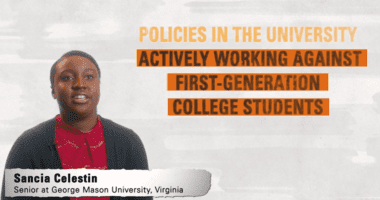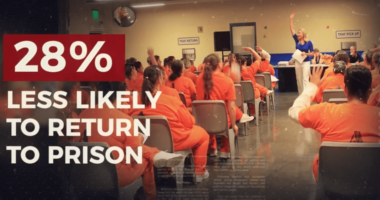Creating a Culture of Success on Campus
In fall 2005, at my freshman orientation at the University of Oklahoma with other African American students, a former director for Black Student Life told us to look to our left and then to our right. He said that the odds of all three of us graduating were extremely slim. A sobering message, but a true one.
Students of color and low-income students fail to reach graduation at much higher rates than their white or more affluent peers. In 2012, the overall six-year graduation rate among four-year colleges was 59 percent. For African Americans, it barely reached 40 percent, and for Hispanic students, 52 percent — much too low when compared with white students (63 percent).
But demographics aren’t destiny. Colleges can help change those numbers by making the success of all students (especially underrepresented and first-generation students who need more support) a priority. And students of color can help change those numbers by being sure to select the colleges that do this before National Decision Day on Thursday. It might seem intuitive that a college should keep student success central to its mission, but it’s surprising how few institutions have systems and supports in place to help their neediest students reach graduation. Boosting the success rates of students of color and students from low-income families requires campus leadership dedicated to targeting resources to related efforts — those that are academic and those that are cultural as well.
Take a look at Florida State University, which has shown its dedication to equity through a variety of strategies aimed at closing their graduation gap. In 2000, FSU created the Center for Academic Retention and Excellence to consolidate academic student support programs to better serve first-generation college students and others who need more academic support. FSU also has a program called Advising First, where academic advisers collaborate with students to make sure they are taking the classes they need to graduate and achieve their goals after college. By looking at its data and adjusting policies in turn, FSU leaders have managed to create a learning environment where more than 74 percent of African American students and 68 percent of Hispanics graduate. Even better? There are relatively small gaps when compared with the 75 percent graduation rate for white students.
How can students find colleges like FSU that really care about seeing them walk across the stage, degree in hand? Through College Results Online, a free online tool that lets users compare four-year universities with similar characteristics on metrics like graduation rates by race or gender, retention or progression rates, degrees granted per program area, and costs after financial aid and broken down by family income. The more comparative information students and families have about institutions, the better equipped they are to choose colleges that have a history of success with students who look just like them.
In the end, I graduated from the University of Oklahoma. But these days, only half of us do. Universities must think about the academic and cultural supports that they can provide to make success more attainable for all students, regardless of race, income, or preparation. Simply enrolling first-generation and underrepresented students isn’t enough.












